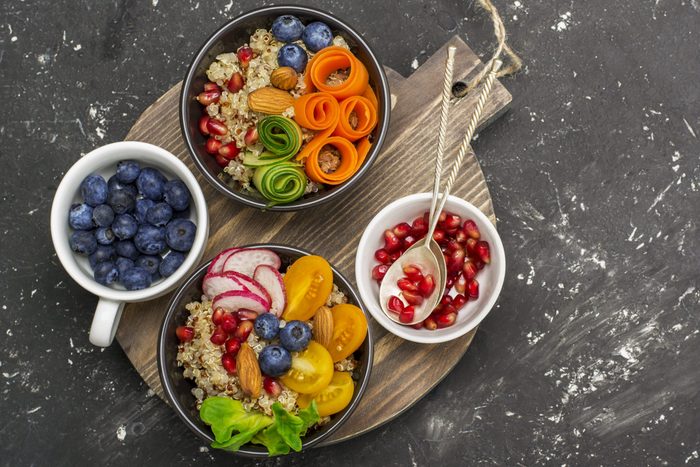
Ever-changing food news
What we hear about healthy eating and nutrition changes pretty often: first fat is the devil, then it’s not; losing weight is all about cutting calories, then it’s carbs. And sometimes one negative research claim about a food trumps all the positive benefits—giving it an undeserved bum rap. Learn the truth about these misunderstood foods, and why they can retake their rightful place in your diet.
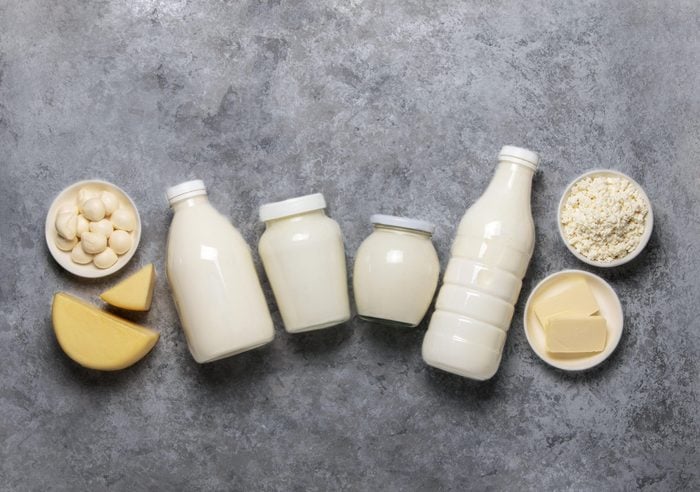
Whole milk
This is the milk your momma gave, and what you stuck with until the whole saturated-fat-causes-heart-disease news happened. Then you switched to the reduced-fat versions or maybe even started pouring non-dairy alternatives into your cereal. But here’s the thing: If you can drink cow’s milk, it’s a good source of protein, with 8 grams per cup (plus calcium and vitamin D); the same amount of rice, almond, or coconut milk has only 1 gram of protein or less. Whole, when compared to skim or low fat milks, obviously has fat, and therefore more calories—“but this isn’t necessarily a bad thing,” says Alissa Rumsey, RD, spokesperson for the Academy of Nutrition and Dietetics. A little fat may help you feel fuller, longer, so you eat less, she explains. To get the benefits of whole milk while keeping the calories in check, stick to a single cup serving, suggests Rumsey.
Read up on the best sources of protein, according to Canada’s Food Guide.
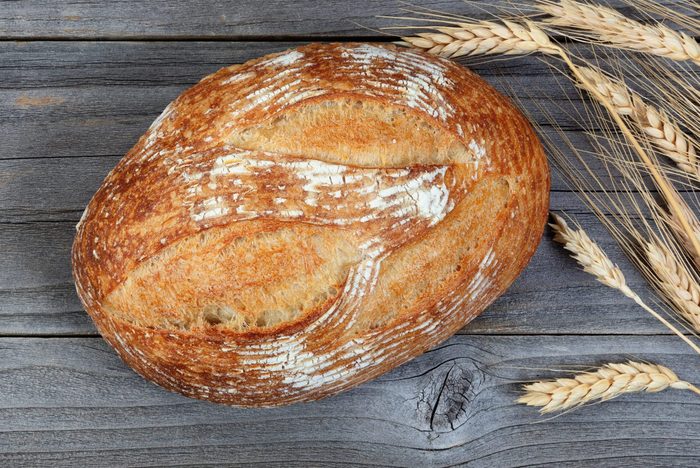
Bread
No, no… not the sliced white kind. That loaf stays on the supermarket shelf. But feel free to reserve a spot in your shopping cart for 100 per cent whole-grain breads. Those slices contain the whole grain, and all the nutritional perks that come with it. Refined grains—used to make the white breads—are stripped of the outer bran shell and germ (where most of the vitamins, minerals, protein, and fibre occur), leaving only the starchy endosperm centre. “Whole grain carbs better regulate blood sugar,” says Rumsey, “and are linked to a reduced risk of diabetes, heart disease, and certain cancers.” But bread buyer, beware: Some brands will stick “natural,” “whole grain,” or “7 grain” on the package, but are still made mainly with refined grains. To make sure you’re getting the real deal, the first ingredient should be “whole grain flour” or “100% whole wheat flour.”
Check out the bread-buying mistakes everyone makes.
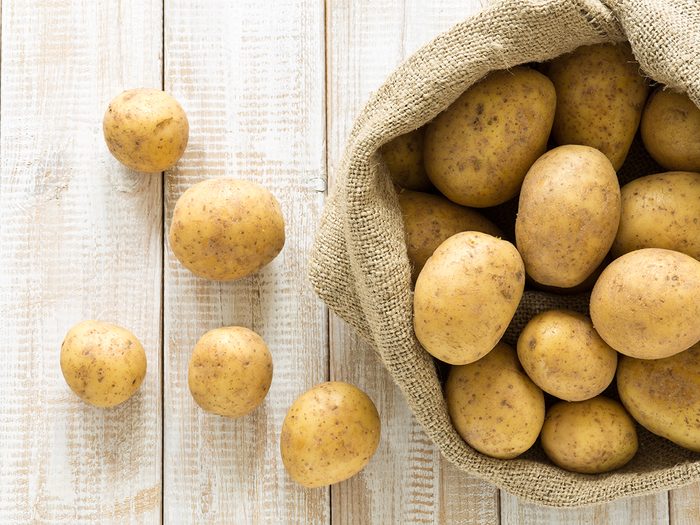
White potatoes
You worry about the high-carb content, but the root of the problem is how most of us choose to eat potatoes—as fatty fries, calorie-crazy chips, salty tater tots, or left intact, but topped with bacon, butter, and sour cream, says Rumsey. But a humble naked baked potato contains only about 160 calories, is packed with vitamin C, energy-producing vitamin B, fibre, and almost twice the potassium of a banana. White potatoes also contain resistant starch—a type that isn’t fully broken down or absorbed by the body, so it doesn’t cause the same spike in insulin as other high-carb foods, says Rumsey. To retain the most nutrients when cooking, bake or microwave with the skin on, which is where most of the fibre resides.
Discover 12 easy ways to get more fibre in your diet.
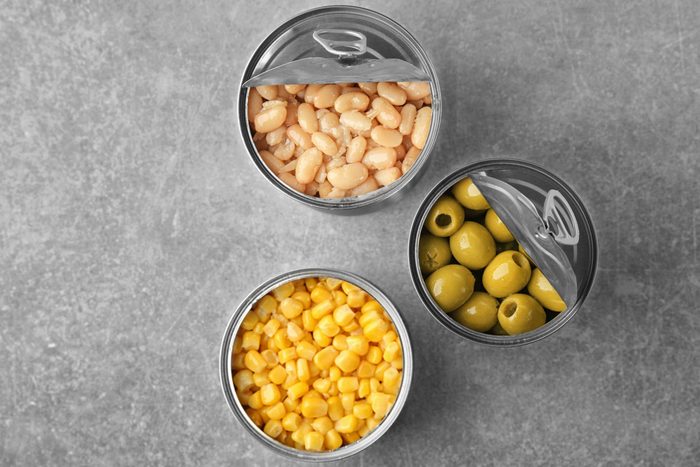
Canned vegetables
Before you make a stink face, consider this: Canned veggies offer the same amount of vitamins and minerals as their fresh counterparts, says Tanya Zuckerbrot, MS, RD, author and founder of F-Factor Diet, a private nutrition counselling practice in New York City. In fact, research shows eating them is associated with a higher-quality diet, lower body weight, and lower blood pressure. Plus, canned veggies are inexpensive, prepped and ready, and always available, regardless of the season. Sodium can certainly be high, but that’s easily remedied: Look for low sodium versions and/or rinse them until the water runs clear to get rid of the excess sodium content, suggests Zuckerbrot.
Find out what happens to your body when you eat too much salt.
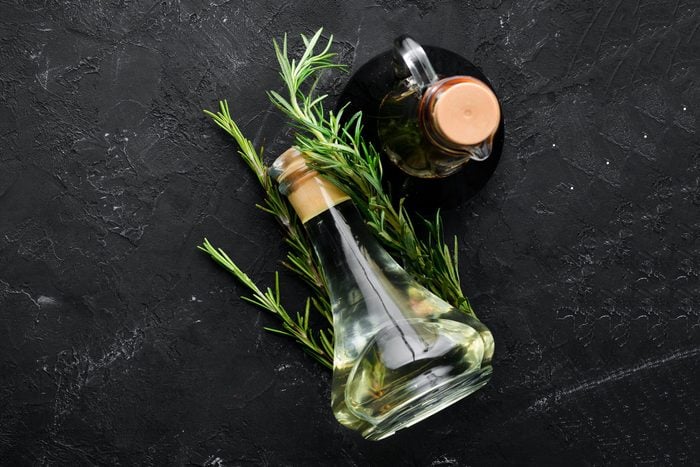
Regular salad dressing
Fat-free versions may be lower in calories but are often loaded with sugar and salt to add flavour. Plus, your body needs fat to absorb many of the vitamins and other nutrients in your salad greens. Creamy salad dressings are smart to skip since they can contain a lot of saturated fat. Your best bet is a vinaigrette that lists olive or canola oil as a main ingredient (for a dose of healthy fats), followed by vinegar, water, and spices. Keep your drizzle to two tablespoons to help control calories.
Here are the healthiest cooking oils you can buy.
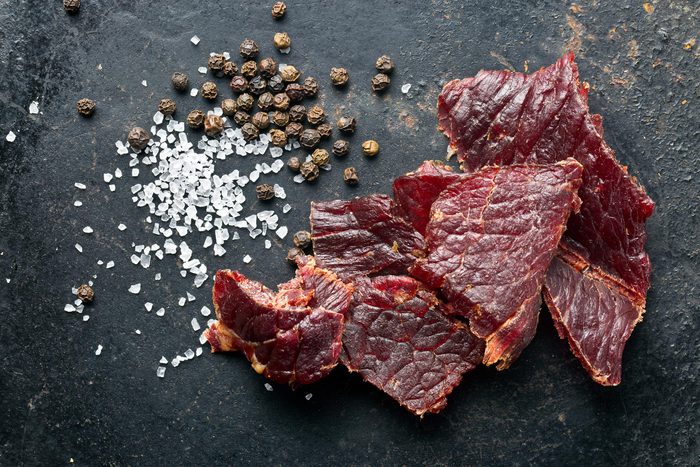
Beef jerky
Call it the comeback snack—because it actually has come back a better version of its former self. Many manufacturers cut down the artificial additives, preservatives, and insane amounts of sodium, and instead offer nitrate-free varieties in gourmet flavour combos, like chili lime and black cherry barbecue. The other pluses: Jerky is super high in protein, low in calories, and supplies a good dose of iron and zinc, two essential minerals that help boost your immune system, says Zuckerbrot. If you’re not into the beef, there’s chicken or turkey jerky, or even vegan options. Look for brands that say “no nitrates” on the package, and stick to a one ounce serving, or about the size of your thumb.
Learn to spot the signs you’re not getting enough protein.
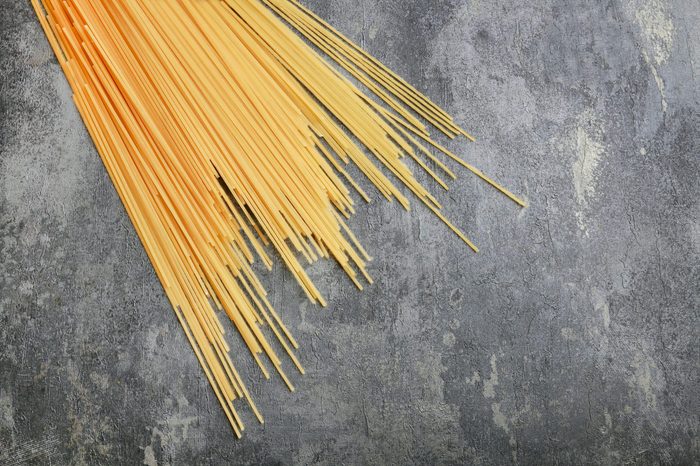
Pasta
White versions don’t offer much in the way of nutrition, but you know that. And the first time you tried whole-grain pasta was also the last—the gummier texture and grainier taste was tough to stomach. But give it another shot. The quality of whole grain pasta is much improved, and you still get the benefits of the fibre, vitamins, and nutrients. Or better-than-white pastas include those made with semolina flour, milled from durum wheat, which is higher in protein, says registered dietitian Libby Mills. Whole-wheat pasta blends, which contains both whole wheat and refined grains, are also available; as are pastas made from quinoa, lentils, edamame, and chickpea.
Here’s how to read nutrition labels like a pro.
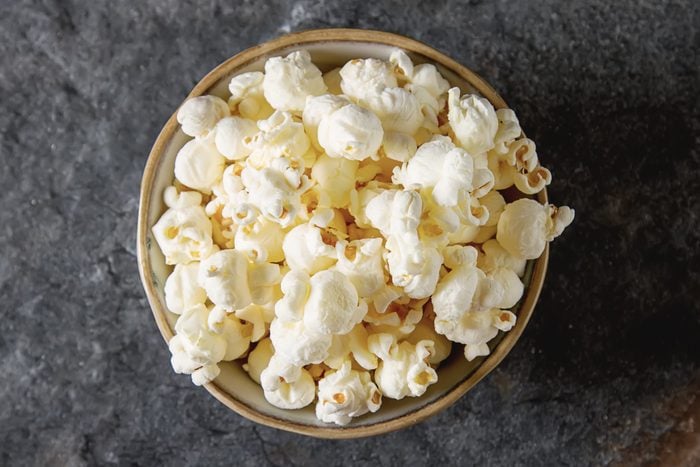
Popcorn
The stuff they serve at the movie theatre should remain in exile: chomp your way through a large tub and you can easily ingest upwards of 1,000 calories and 50 grams of saturated fat, says Zuckerbrot. Oil-popped, flavoured, microwave, or prepackaged gourmet popcorn aren’t much better—they are often heavily processed and loaded with sugar or salt. But basic air-popped kernels are high in satisfying fibre and contain as few as 31 calories per cup. Pop your own kernels on the stove with a little bit of vegetable oil.
Find out the healthiest snacks to eat before bed.

Hot chocolate
You’ve heard a gazillion or so times that dark chocolate is a good choice, thanks to research that suggests its disease-fighting flavanols can help reduce blood pressure and protect against cardiovascular disease. You can get the same healthy nutrients in a cup of hot chocolate—as long as you make it with 100 per cent unsweetened cocoa powder (with a touch of sugar or teaspoon of pure maple syrup, if your taste buds prefer). Cocoa powder that’s been “dutched” or “processed with alkali” means it’s gone through an additional step to neutralize the cocoa’s acidity, which results in a darker, milder powder, but also significantly lowers the flavanol content. And as far as the instant hot chocolate mixes, just say no: they’re packed with sugar and additives.
Next, check out 20 foods that lower blood pressure.